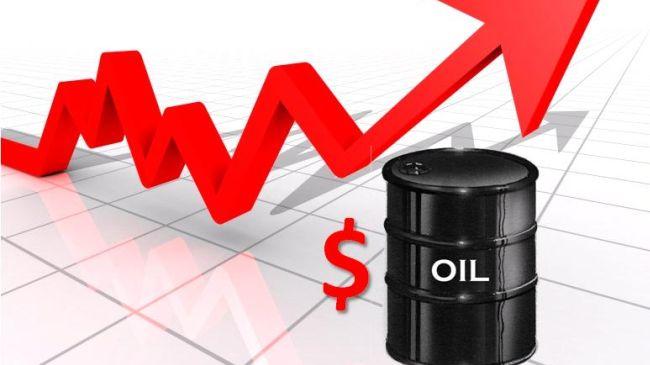Oil prices edge on strong compliance to reduction deal

By Nigar Abbasova
While crude oil prices are still torn between conflicting trends, traders are pursuing a wait-and-see approach looking forward to having a new influencing factor.
Prices edged higher on February 28 supported by surprisingly high compliance of producers to their reduction quotas even though the market remains under threat of swelling U.S. production.
Benchmark Brent crude oil added 17 cents, or 0.3 percent, to stand at $56.10 per barrel, while West Texas Intermediate oil futures added some 11 cents, or 0.2 percent, and stood at $54.16 a barrel. The price of a barrel of Azeri Light crude oil decreased $0.02 to stand at $57.50.
On one hand, OPEC is pushing for broader cuts from the cartel and several large external producers, particularly Russia. The other side of the coin is that U.S. production continues to rise, with Baker Hughes data showing the number of active rigs in the country reaching the record high level since October 2015. Last week U.S. drillers added five oil rigs last week, bringing the total count up to 602.
Oil prices have risen by more than 14 percent since the November oil deal, but are still only trading around $56 a barrel despite efforts of the cartel and external producers.
OPEC officials have repeatedly said the cartel does not target a specific oil price and their focus is on getting rid of a supply glut, drawing global oil inventories and helping the market to re-balance. However, analysts believe that behind closed doors, OPEC hopes to see prices at around $60 a barrel as a result of the first cut in eight years.
Referring to market conditions the cartel's secretary-general, Mohammed Barkindo told a conference in Abuja, Nigeria that OPEC is optimistic and that the "worst is over".
“Signals are highly positive. Now the challenge is how to solidify the platform of 24 countries," he said, referring to 13 OPEC and 11 non-OPEC states.
Regardless optimistic mood of his comments there was a hint that compliance of non-OPEC countries is not sufficient enough. “For non-OPEC countries this is the first time so we can expect teething challenges,” he said.
Eleven non-cartel producers that joined a global deal have delivered roughly 60 percent of promised curbs so far.
The lower compliance figure for non-OPEC is partly due to the phased implementation of the deal by Russia, the world’s largest oil producer.
The prospect of OPEC extending the current cuts even longer may become a significant catalyst for trend development. The cartel could resort to extension and apply even deeper cuts from July should global crude inventories fail to drop to a targeted level.
However, main deterrent for the extension is that higher cuts will inevitably lead to more U.S. shale oil coming into the market. U.S. shale producers started to up production again when crude prices first reached a psychological level of $50 per barrel in May 2016, following a lasting slump triggered by a global glut.
In this regards, the cartel does not want to see the price to be so high that it encourages rival U.S. shale producers to increase their activity even more.
--
Nigar Abbasova is AzerNews’ staff journalist, follow her on Twitter: @nigyar_abbasova
Follow us on Twitter @AzerNewsAz
